Question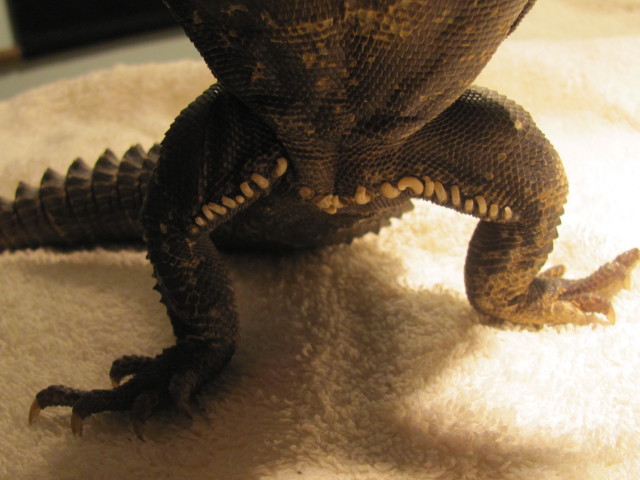 'loops'
'loops'
QUESTION: Hi Donna,
I've had my uro for 8 months but he is about 3 years old. He used to be super active and run around his cage for a couple hours a day and ate like an elephant. He is kept in a 4x2x2 glass/wooden terrarium on 3 inches of sandbox sand. His food is kept in a dish so he rarely ingests any sand from what I see. His diet is a daily salad of swiss chard, parsley, and sometimes broccoli greens and seeds. He has a ceramic heat 'lamp' that stays on 24/7, a 150W basking bulb and an up to date UVB bulb (both ExoTerra brand), and his basking spot is roughly 110F. He gets regular exercise outside his cage.
The problem: at the beginning of the winter he started to sleep more under his rock and eat less, and I thought it was just because of the temperature drop. But it's warm again now and his behavior hasn't changed. I tried lowering the basking heat but that didn't do anything. Then I took him out the other day and noticed these white loops under his legs (see picture) I have no idea what they are but I just noticed them a week ago, but they may have been there for much longer as i didn't take him out much in the winter. He also has gotten muscle twitches in his arms and legs and his reaction time is a bit slower if I dangle food in front of him. He seems to choke on his food pretty often now so I've made everything into really small pieces, however he still eats regularly, just not as much. He also has a very hard time having bowel movements. They are normal-ish and regular but he has a hard time. His shedding is kind of irregular and he's looked like a half peel banana since I got him (which is why I gave him baths-see picture). He has NO leg dragging or serious loss of appetite.
The only source, if it's a parasite, I can think of are the seeds I was feeding him which included pumpkin and I think sesame seeds, form and organic health food store, and he only gets a few a day but loves them to death. I'm willing to take him to the vet if he needs a prescription.
Thanks for taking the time to answer this; I'm leaving in a week for the summer so I really need to figure out what to do for him so a friend can take over whatever it is.
Laura
ANSWER: The white loops are a waxy secretion from the femoral pores that the males use to scent mark their territory, and are nothing to be worried about. They probably had a chance to develop such large plugs due to his inactivity.
The twitching and loss of appetite do indicate a problem. I am certainly not a veterinarian, but based on what you have told me, my guess would be that he is suffering from a nutritional deficiency. Herbivorous animals can be challenging to feed properly in captivity, and vegetables that seem nutritious for us can cause issues in reptiles. Cruciferous vegetables, such as broccoli and swiss chard, are extremely high in oxalates. Since these vegetables have made up the bulk of his diet, this is most likely the source of the problem.
Oxalates bind calcium and prevent it from being absorbed by the body, so even though he has a proper UVB light, he is probably from suffering from the beginnings of secondary nutritional hypoparathyroidism (formerly called MBD or metabolic bone disease).
My recommendation would be to change his diet, and begin supplementing some calcium until he has recovered. A visit to a veterinarian to check on the status of his bones and his overall condition would also be a very good idea. With loss of appetite, you want to be sure that there is not some other issue involved as well.
Recommended greens for a Uromastyx include turnip tops, dandelion greens, and mustard greens. These vegetables are high in calcium and low in oxalates, making them a good staple. Vegetables such as grated squash and green bean can be given. Treats of seeds are fine. Avoid cabbage, kale, broccoli, spinach, and chard.
---------- FOLLOW-UP ----------
QUESTION: Thanks you so much!!! What is included in mustard greens?
AnswerMustard greens are the leaves of the mustard plant. (The seeds are ground and made into the condiment, mustard).
They're often sold as a salad green in the US, though I'm not certain of Canada. You may need to check your local supermarkets. Some folks also use collard greens, but they have a higher oxalate content than may be a good idea at this point. They can be used for variety once he's recovered.
http://upload.wikimedia.org/wikipedia/commons/thumb/5/50/Mustardgreensraw.jpg/24
Additional greens for uromastyx include escarole and endive. This page has excellent uromastyx care information that includes detailed dietary information.


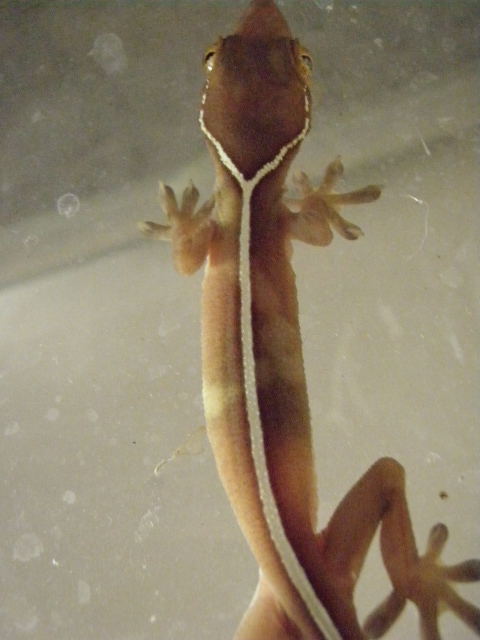 spots on gekko vittatus
Question
Spots foto
Hello, I have recently notic
spots on gekko vittatus
Question
Spots foto
Hello, I have recently notic
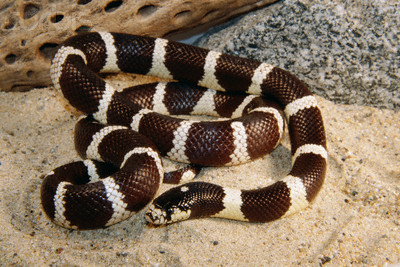 King snake
QuestionQUESTION: I found a king snake in my garden las
King snake
QuestionQUESTION: I found a king snake in my garden las
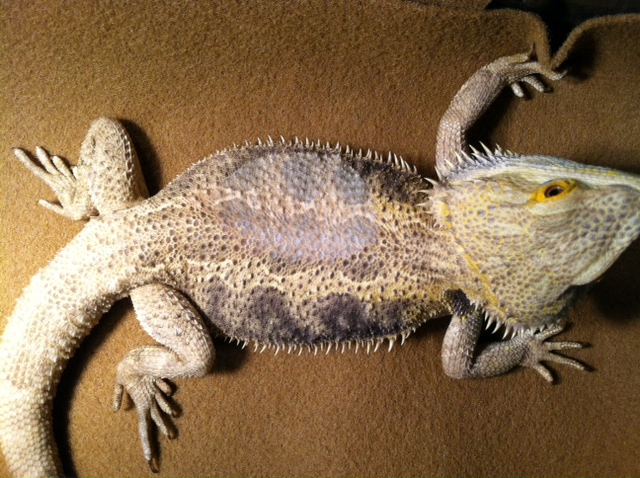 Bearded Dragon skin problem
Question
Bearded Dragon
Something is wrong with
Bearded Dragon skin problem
Question
Bearded Dragon
Something is wrong with
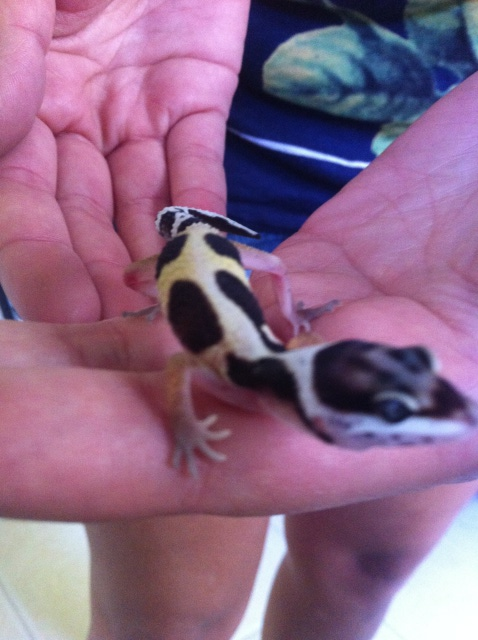 hatchling leopard gecko
Question
Salem
Hello Donna,
I am contacting you
hatchling leopard gecko
Question
Salem
Hello Donna,
I am contacting you
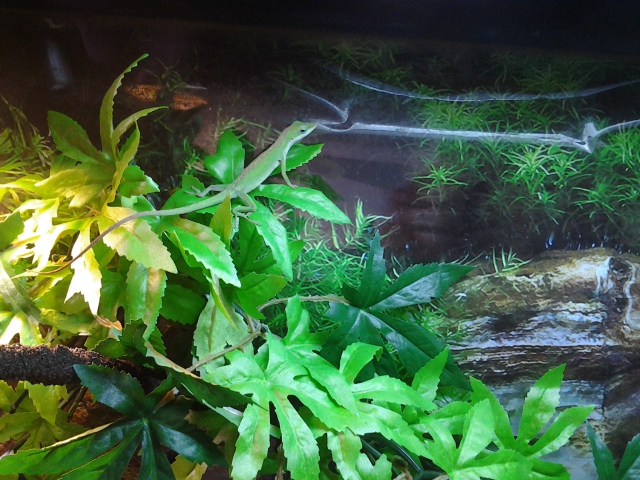 green anole care help
Questionanole color
my tank
QUESTION: hey
green anole care help
Questionanole color
my tank
QUESTION: hey